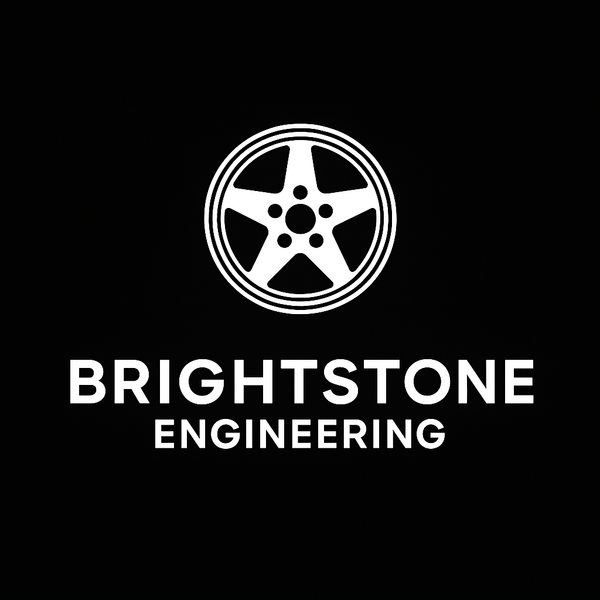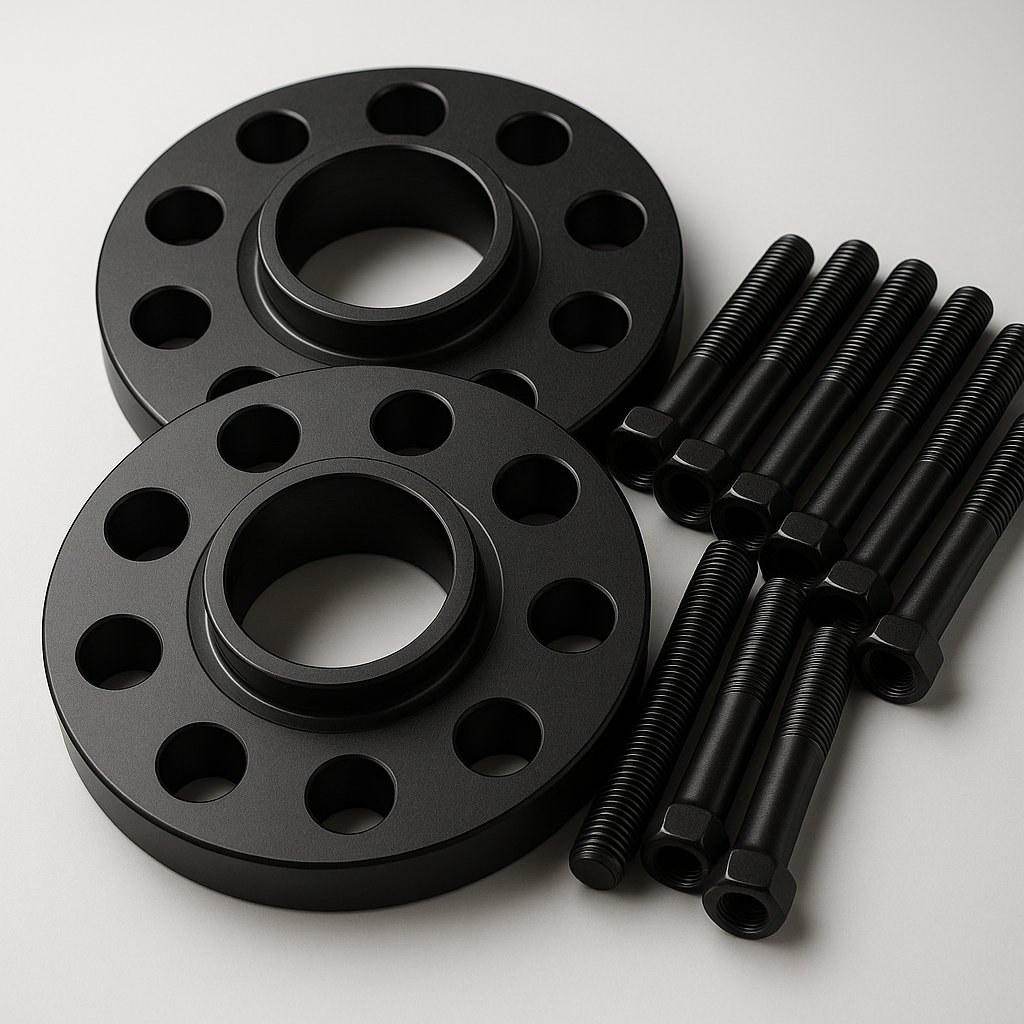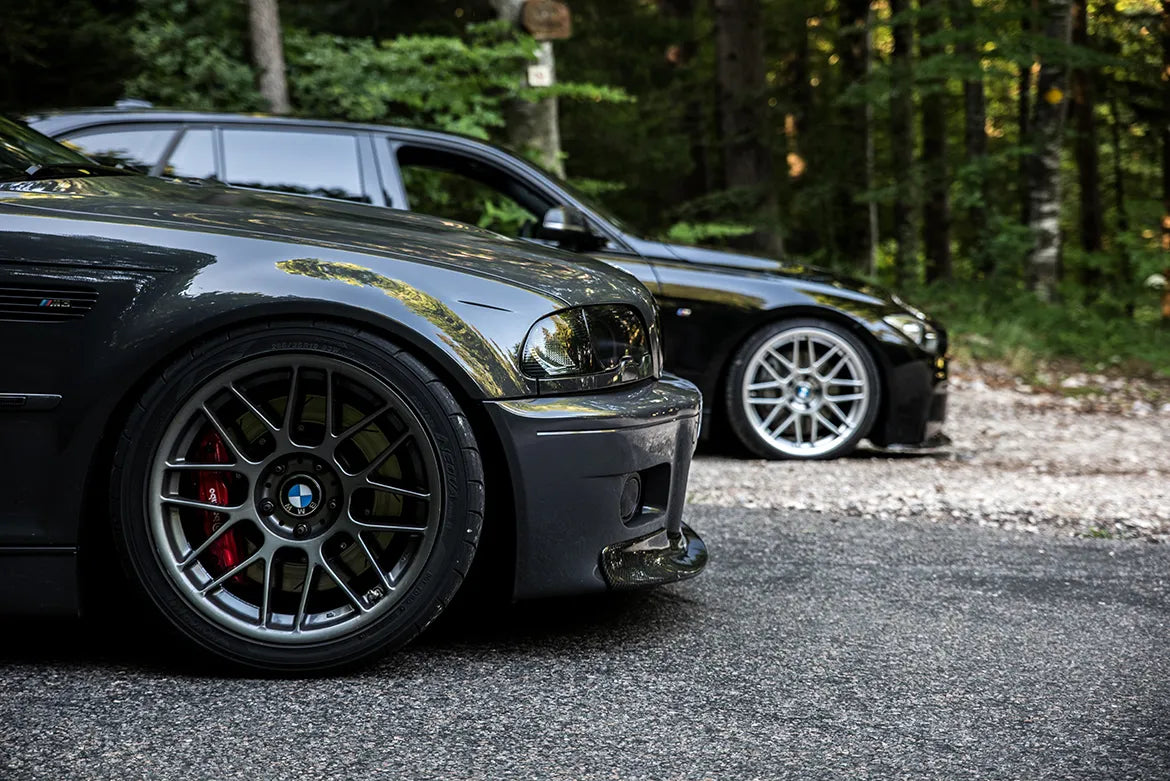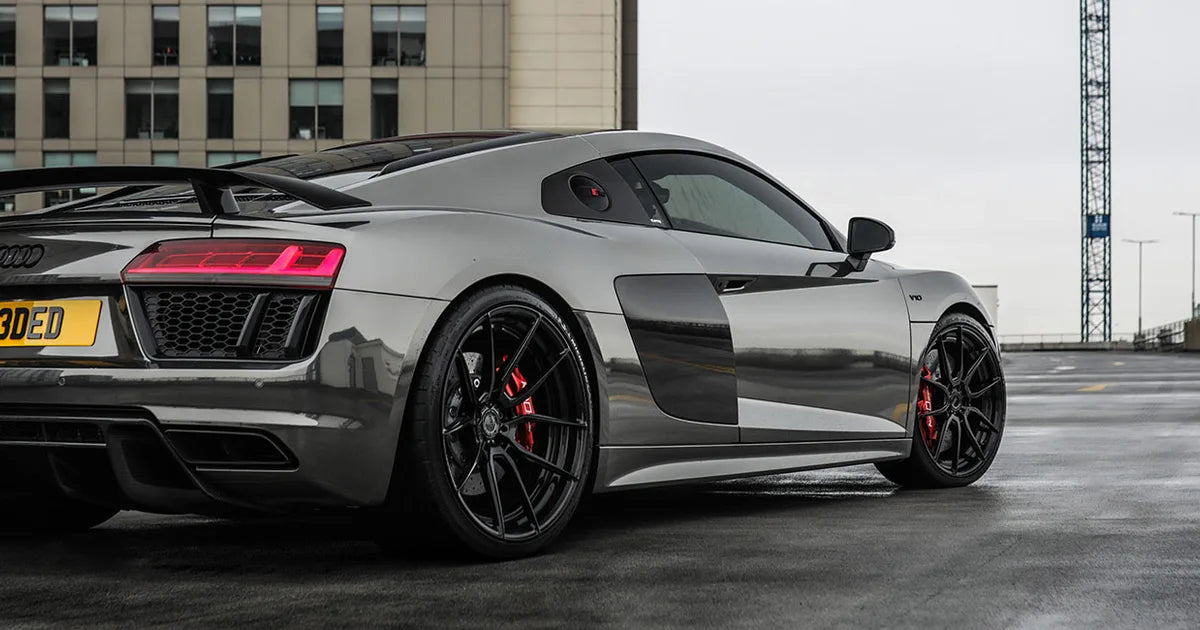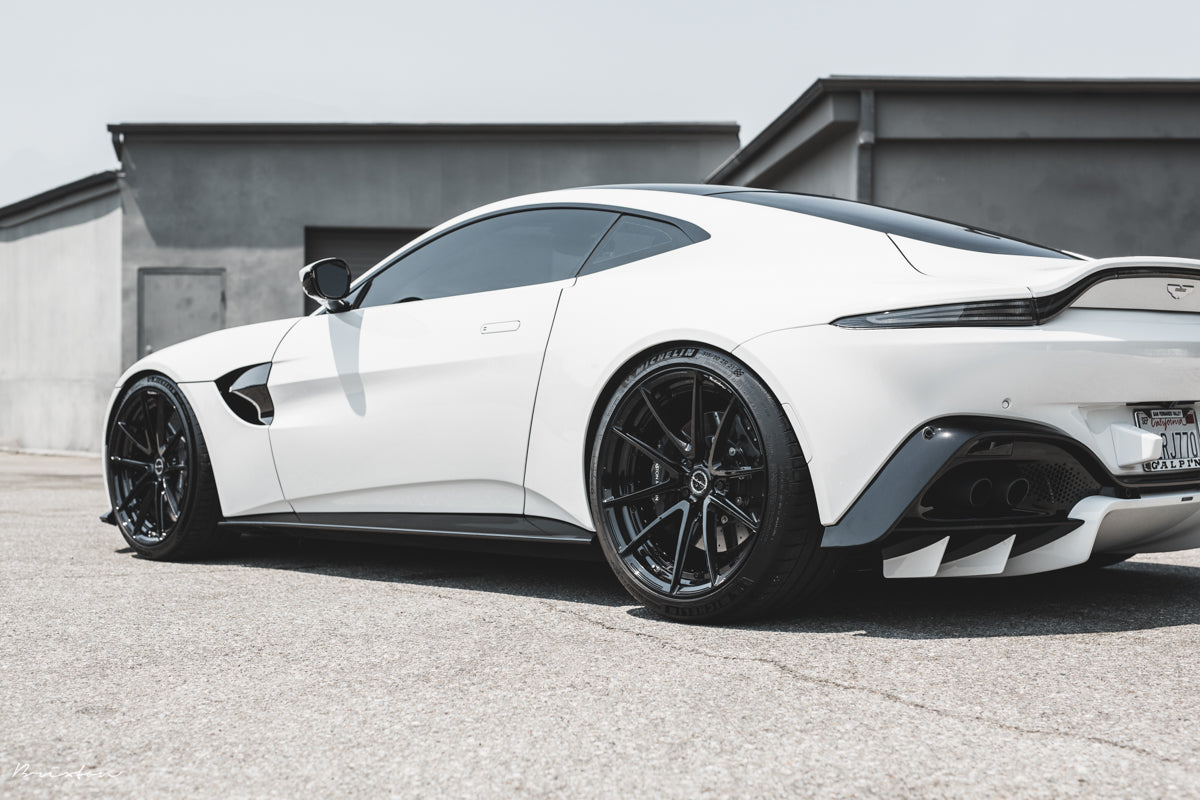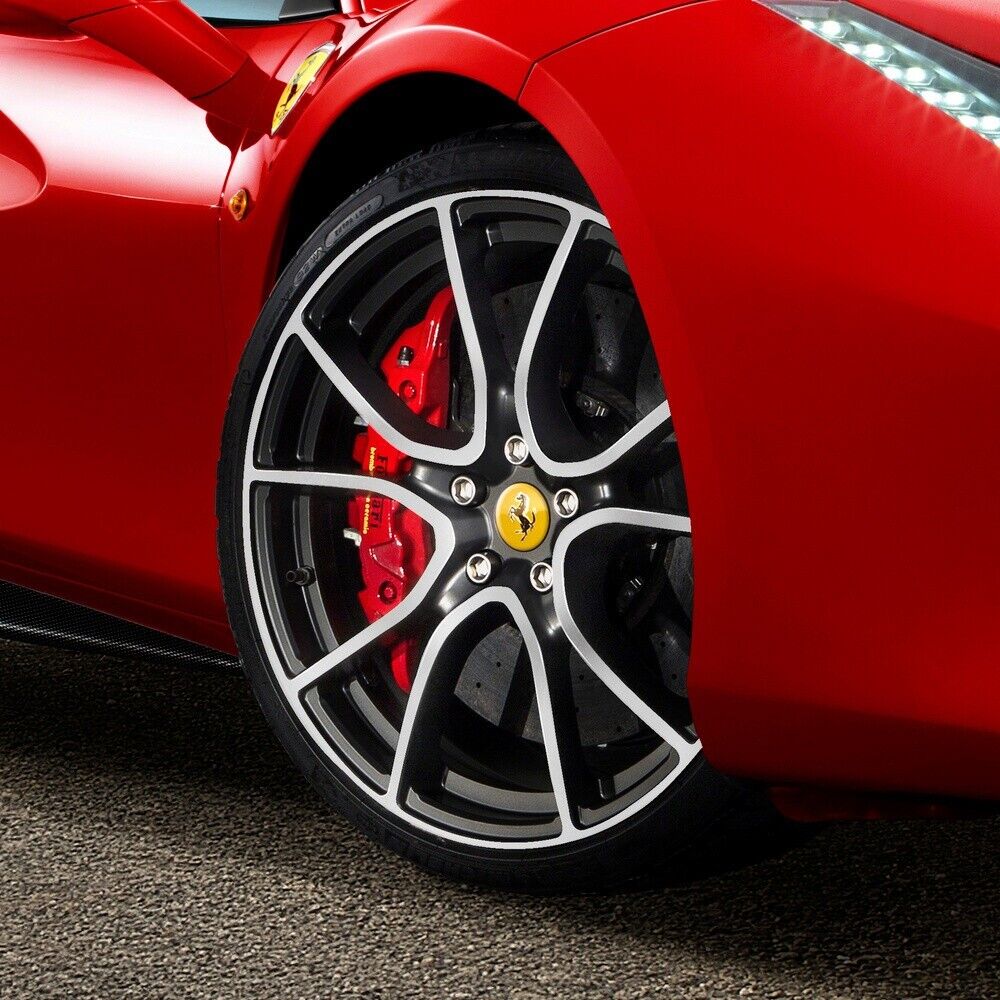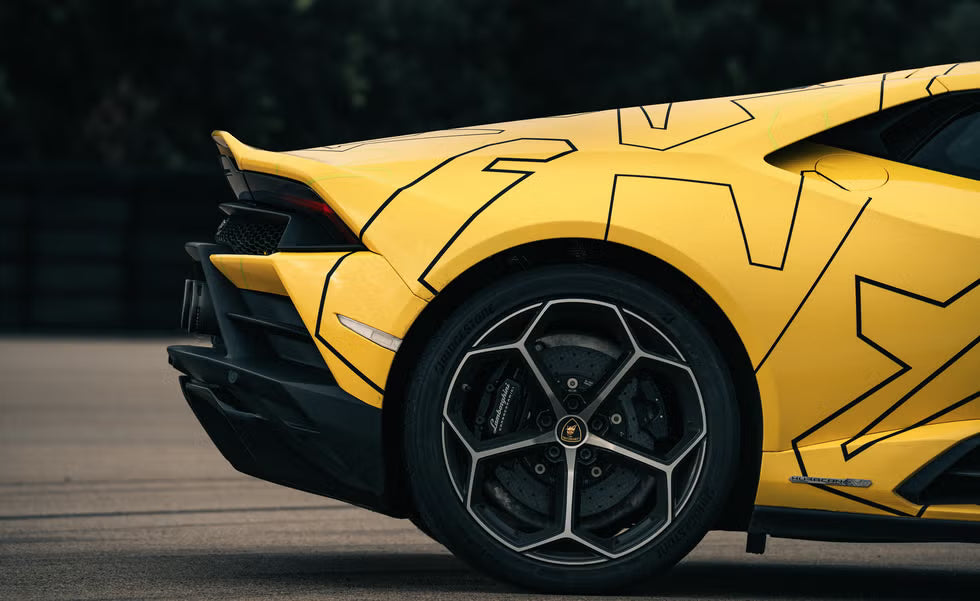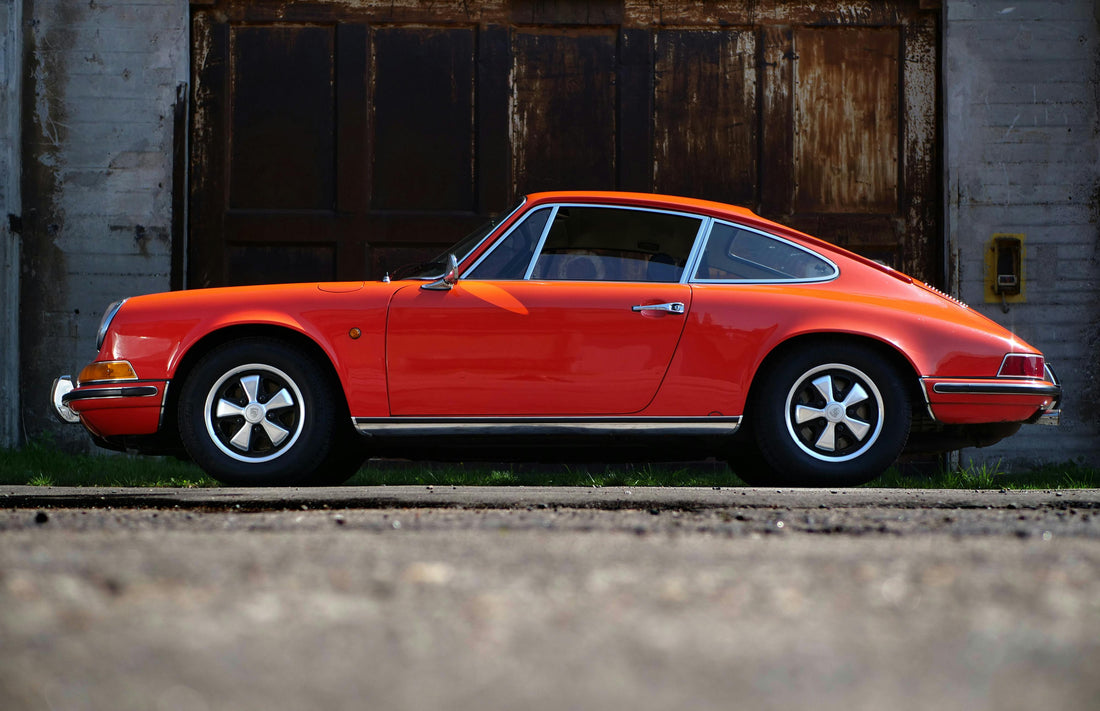
Classic Car Part Machining: Custom Precision for Vintage Vehicles
Share
Introduction to Classic Car Part Machining

Finding parts for classic cars used to be a nightmare. I've seen customers come to our shop after spending months searching for that critical component for their vintage MG or Jaguar. That's why we started offering classic car part machining at Brightstone Engineering.
You can't just pop down to Halfords for that broken trim piece on your '65 Corvette or that impossible-to-find gearbox part for your classic British sports car.
We fill this gap by combining traditional metalworking skills with modern CNC machining to recreate parts that haven't been manufactured in 50+ years. Our approach brings fresh eyes to old problems - using our Shining 3D Einstar scanner to capture the exact geometry of worn parts, then machining replacements on our Haas TM1P that are often better than the originals.
As I often tell customers, "We're not just making parts - we're keeping history running."
The economics of classic car restoration make perfect sense when you look at the bigger picture. A well-restored vintage car with proper custom components often becomes more valuable with each passing year. Beyond money, there's something special about preserving these machines. Each classic car saved through precision manufacturing keeps automotive heritage alive for another generation.
Our techniques focus on honoring the past while sneaking in modern improvements where it counts. We recently made replacement brake brackets for a customer's Triumph TR6 using our CNC equipment - virtually identical to the originals but machined from better material with our anodizing treatment for long-term protection.
That's the sweet spot we aim for - period-correct appearance with modern reliability. With more barn finds turning up every month and parts supplies dwindling, our classic car part machining services become more valuable with each passing year.
Understanding Classic and Vintage Car Parts

People throw around terms like "classic" and "vintage" all the time, but there's actually a difference when talking about car parts. Generally, vintage car parts come from pre-1960s vehicles, while classic car parts typically come from the 1960s through early 1980s.
The age affects everything about how we approach machining them. Vintage car parts were often made from heavier, thicker materials - lots of cast iron, brass fittings, and simpler steel alloys. By the time you get to classic car components from the 70s, you start seeing more aluminum, thinner gauge steels, and the beginnings of plastic integration.
Each era requires different manufacturing approaches in our work.
The original factory methods used to make these parts fascinate me. Early car parts were made with less precision but more material thickness to compensate. When we're doing classic car part machining today, we often need to reverse-engineer not just the part itself but the original manufacturing intent.
The most common items we recreate include gearbox components, brake parts, engine mounts, and body trim brackets. We recently finished custom dash panel components for a 1960s British sports car where the original pot metal had deteriorated beyond recognition.
Wheel fitment presents another common challenge for classic car owners. Original wheel specifications often don't work with modern tires or when you want to update the look with different wheels. We machine precision wheel spacers that safely extend track width while maintaining proper hub engagement - essential when fitting wider tires or clearing suspension components. PCD adapters solve bolt pattern incompatibilities, letting you run modern wheels on classic hubs or mix wheels between different manufacturers. Custom suspension spacers help achieve the perfect stance and ride height, whether you're lowering a classic or need specific geometry for track use. Each component gets machined to exact specifications and can be anodized for long-lasting protection and authentic appearance.
Using our Haas TM1P CNC milling machine, we matched the original dimensions but improved the material quality, finishing the aluminum parts with our anodizing process for corrosion protection. That's the balance in good classic car restoration - keeping the design authentic while adding modern precision where it counts.
Our customers don't just want parts that look right; they need them to function perfectly for another 50 years of driving.
Common Challenges in Classic Car Part Machining

The biggest headache in our line of work isn't actually the machining itself - it's the detective work beforehand. Half the classic car parts we make start with a customer bringing in something broken, worn beyond recognition, or just plain missing. "Can you make one of these?" they ask, holding what's essentially a paperweight.
Last month a gentleman brought in what was left of a window mechanism for a 1960s Austin-Healey. The pot metal had literally crumbled in his hand. With vintage car parts like these, there are no technical drawings or specifications to work from.
This is where our Shining 3D Einstar handheld scanner becomes invaluable. We can capture the geometry of even severely damaged parts, then use our CAD software to reconstruct what the original should have looked like. This reverse engineering process takes time, which is partly why custom manufacturing for classic cars costs more than mass-produced modern components.
Material compatibility creates another layer of problems. I can't count how many times we've had to research threading standards because modern fasteners don't match up with 60-year-old specifications. British classics are notorious for this - their mix of imperial and metric measurements makes precision machining a real challenge.
The cost factor is unavoidable in classic car restoration. When you're making one of something instead of 10,000, the price per part goes up dramatically. We try to help customers by batching similar work - if three MG owners all need the same bracket, we can run them together and everyone saves money.
Finding authentic materials sometimes feels impossible too. Try sourcing the correct grade of brass for a 1930s component, and you'll see what I mean. We often suggest modern alternatives that match the appearance while offering better performance - like our anodized aluminum parts that look period-correct but won't corrode like the originals.
Despite these challenges, there's nothing more satisfying than seeing a classic car drive away with parts we've made keeping it on the road.
Sourcing Authentic Parts and Machining Solutions

Finding genuine parts for your classic car feels like treasure hunting these days. The best resources for truly rare vintage car parts are still the specialist clubs and forums. When parts simply don't exist anymore, that's where our custom machining services come in.
We recently helped a customer who'd spent three years looking for a specific transmission bracket for his Triumph TR4. After exhausting every possible source, we scanned the mounting points and reverse-engineered a replacement. He was back on the road in two weeks.
Choosing the right partner for classic car part machining makes all the difference. Our workshop combines traditional skills with modern precision machining techniques. Not every CNC shop understands the unique requirements of vintage vehicles - the quirky tolerances, odd materials, and historical accuracy needed.
We've invested in digital scanning tools that can create perfect 3D models of original parts, even damaged ones. Our Shining 3D scanner captures exact dimensions before we create toolpaths for our Haas CNC machine. This technology lets us reproduce parts with incredible accuracy while improving materials where appropriate.
For visible components, we maintain period-correct appearance through careful material selection and our anodizing or cerakoting processes. Both treatments can handle parts up to 400mm square, covering most classic car applications while providing long-term protection the originals never had.
When you combine digital precision with understanding of how these classic cars were built, you get parts that not only fit perfectly but perform better than the originals. That's the human element we bring to every project, whether it's a simple bracket or a complete set of custom engine components.
Custom Machining Techniques

Our approach to classic car part machining starts with understanding what we're trying to achieve. The basic process begins with creating a digital model of the part, either by scanning an original sample or designing from scratch using reference points on the vehicle.
Our Haas TM1P CNC milling machine then follows these digital instructions to cut, drill, and shape metal with precision that often exceeds what the original manufacturers achieved. For a classic car enthusiast, this precision means parts that fit right the first time.
Before modern CNC technology, machinists would spend hours hand-finishing components to get them to fit properly. Now we can make perfect duplicates every time. Our machine handles everything from simple brackets to complex components with intricate features.
Last year we created a set of custom carburetor adaptors for a Datsun 240Z using our CNC equipment combined with finishing work on our Mill. The software side makes all this possible. We use CAD programs to design parts from scratch when originals aren't available for scanning.
One particularly challenging job involved recreating window mechanisms for a 1950s sports car. The original parts had zinc rot and crumbled when touched. With no pattern to work from, we measured the spaces where they needed to fit, designed completely new parts in CAD, and machined them from solid aluminum.
We finished them with our anodizing process - they looked period-correct but would never corrode like the originals. Material selection matters tremendously in these projects. While most classic car parts were made from basic steels, brass, or pot metal, we can now use modern alloys that look identical but perform better.
For visible parts, we stick with period-appropriate materials and finishes. For hidden components like engine internals or brackets, we often upgrade to stronger, more durable options that we can protect with our cerakoting process.
Reverse Engineering: Bringing Lost Parts Back to Life

Reverse engineering car parts is probably my favorite part of what we do at Brightstone Engineering. Nothing beats the challenge of a customer walking in with a broken piece of metal that hasn't been manufactured in 60 years and asking, "Can you make this?"
Last month, a gentleman brought in what remained of a water pump bracket for his 1960s Jaguar. The original was corroded beyond repair, with chunks missing and cracks throughout. With no service manuals or technical drawings available, we had to recreate it from scratch.
This is where our classic parts fabrication process really shines. We start by scanning what's left of the original part using our Shining 3D Einstar. This handheld scanner captures every curve and dimension, even on severely damaged components.
Then comes the detective work - figuring out how the part was originally designed and what it's supposed to do. This is where research and understanding of automotive engineering pays off. Different manufacturers had their own approaches to design problems.
Once we understand the part's function, we use CAD software to create a digital model that can improve on the original where possible. Sometimes we'll add material in areas that typically crack, or modify mounting points for better strength distribution.
Our Haas TM1P then machines these custom car parts to specifications that often exceed the original tolerances. When that Jaguar owner came back to pick up his water pump bracket, he couldn't tell the difference between our recreation and an original - except ours was anodized for corrosion protection and would outlast the factory part by decades.
That's the magic of what we do - keeping these beautiful machines running with parts that sometimes work better than the originals ever did, while maintaining their authentic appearance.
Quality Control and Testing in Machining

Quality control separates parts that look right from parts that actually work right. Every piece that comes off our machines goes through careful inspection using precision measuring tools. We check all dimensions against our specifications and test fit wherever possible.
For critical components in classic car restoration, professional shops use additional verification methods like hardness testing and load testing. When you're dealing with brake components or steering parts, there's zero room for error - these processes ensure safety-critical parts meet proper standards.
The biggest challenge in classic car part machining is maintaining consistency. We might make a bracket for one customer, then need to make more six months later for someone else with the same car. Our solution is keeping detailed digital records of every job - not just the CAD files but also the exact machine settings, cutting tools used, and material specifications.
This documentation helps us maintain precision regardless of when parts are made. We also encourage customer feedback on every part we produce. Last month, a customer pointed out that our reproduction door handles for his Jaguar looked perfect but didn't have the same feel as the originals.
He was right - we'd used slightly different spring steel. We researched the original specifications and remade them with the correct material properties. Now we keep detailed notes about these subtle but important details.
Our anodizing and cerakoting capabilities add another layer of quality to finished parts. Both processes require careful surface preparation in our blasting cabinet, followed by precise temperature and timing control. The result is protection that often exceeds what original parts ever had.
Steps to Manufacturing Classic Car Parts
The process always starts with a conversation. When a customer brings in a rusty bracket from their classic car or just a photo of something they need, we begin by asking questions. How will this part be used? What loads will it carry? Does it need to look period-correct?
A steering component needs different treatment than a decorative trim piece. Then we measure everything - carefully and repeatedly. For complex shapes, we use our Shining 3D scanner to create a precise 3D model.
If the original part is too damaged, we might need to research similar components or work from mounting points and photographs. I remember a customer who brought in just the bolt holes where a missing bracket should go on his vintage Jaguar. We had to work backward from those holes to design something that would fit and function correctly.
The planning stage is critical - rush this part and you'll waste time and materials later. Once we've nailed down the design, we select the appropriate material. Sometimes this means matching the original intent - steel for structural parts or aluminum for lighter components.
Other times we'll suggest upgrades - using 6061 aluminum instead of pot metal for parts that historically fail, then protecting them with our anodizing process.
Our CNC machining process on the Haas TM1P then brings the digital design to life. For simpler classic car parts, this might take just an hour. Complex components with multiple features might spend most of a day on the machine. We recently reproduced a transmission mount that required multiple setups and custom fixturing.
After machining comes the finishing work - deburring edges, tapping threads, and surface preparation. We can create everything from polished stainless steel to our signature anodized finishes that provide both protection and period-correct appearance.
Before any part leaves our shop, we check the fit whenever possible. This attention to detail is why classic car enthusiasts trust us with their irreplaceable vehicles.
Choosing a Reliable Machining Partner
Finding the right shop for classic car part machining isn't just about who's cheapest or closest. When you're looking for a partner, check what specific capabilities they offer for vintage vehicle work.
At our shop, we've invested in the technology that makes difficult jobs possible - our 3D scanner for reverse engineering, CNC equipment for precision, and specialized finishing processes like anodizing and cerakoting.
Ask to see examples of work on vehicles similar to yours. We keep detailed photos of finished projects - everything from simple brackets to complete custom assemblies. One customer told me he chose us after seeing the Weber manifold adaptor we'd made for another classic car just like his.
The technology a shop uses tells you a lot about their capabilities. Modern CNC equipment can handle everything from aluminum to hardened steel with repeatability that manual methods can't match. But the best shops also understand when traditional techniques are appropriate.
Ask potential partners how they'll approach your specific project. They should talk about both the technical aspects and show real understanding of how the part functions on your classic car. Communication style matters too - if they take time to explain options and really listen during your first meeting, that's a good sign.
We often spend significant time just talking through a project before making the first cut. For specialized finishing, make sure your chosen shop can actually provide what you need. Our anodizing capability handles most classic car components up to 400mm square, while our cerakoting process offers even more color and protection options.
Many general machine shops can cut metal, but fewer understand the specific requirements of vintage vehicles - the importance of period-correct appearance combined with modern reliability.
Future Trends in Classic Car Part Machining
The classic car world is changing fast, and machining techniques are evolving right alongside it. While traditional CNC machining remains the backbone of what we do, new technologies are opening exciting possibilities.
3D printing has found its place as a prototyping tool - brilliant for creating test versions before we machine final parts in metal. Last month we printed a prototype dashboard switch for a vintage Aston Martin. The plastic print let the customer check fit and function before we machined the final version in aluminum with our anodizing treatment.
Materials science has opened new doors for custom work too. We can now machine parts that look period-correct but perform better than the originals ever did. Modern aluminum alloys resist corrosion while maintaining authentic appearance, especially when treated with our protective finishes.
Digital archiving represents perhaps the biggest long-term change. Every part we scan and recreate becomes part of a digital library that preserves that component forever. Future classic car owners will benefit from this accumulated knowledge.
Environmental considerations are driving changes in manufacturing processes too. Modern coolants and recycling programs make machining more sustainable while maintaining quality standards.
Looking ahead, I believe the biggest opportunity lies in combining old-world understanding with cutting-edge precision. As classic cars become more valuable and original parts harder to find, shops that can deliver both authenticity and reliability will keep these automotive treasures on the road for generations to come.
FAQs and Essential Tips
"How much does custom classic car part machining typically cost?" That's usually the first question people ask, and the answer depends entirely on complexity. A simple bracket might cost £75-150, while a complex component requiring multiple operations could run £300-500. We provide detailed quotes before starting any work, breaking down material costs, machine time, and finishing.
Many customers wonder about the benefits of CNC machining versus traditional methods for classic cars. The precision and repeatability are game-changers - especially when we need to make multiple identical parts or reproduce components from damaged originals.
"What's the difference between classic vs vintage car parts when it comes to machining?" Vintage car parts (pre-1960s) typically require more reverse engineering work because documentation is scarce. Classic parts from the 60s-80s often have better records but present their own challenges in materials and construction methods.
For resources beyond machining services, I recommend joining owners' clubs and connecting with specialists who understand your specific make. Our approach combines traditional craftsmanship with modern technology - you get period-correct appearance with better durability through our anodizing and cerakoting processes.
When selecting a machining partner, look for shops with demonstrable experience in automotive work and investment in appropriate technology. The right combination of 3D scanning, precision CNC equipment, and specialized finishing capabilities makes the difference between parts that fit and parts that excel.
Quality control varies significantly between shops. Professional operations should offer detailed inspection procedures, though specific testing requirements depend on the part's function. For safety-critical components like brake or steering parts, additional verification through hardness testing or load testing may be necessary.
Whether you're restoring a pre-war collector's item or a 1970s sports car, the right machinist makes all the difference in keeping these mechanical treasures roadworthy. At Brightstone Engineering, our combination of modern equipment and dedication to automotive history ensures your classic car gets the parts it deserves.
